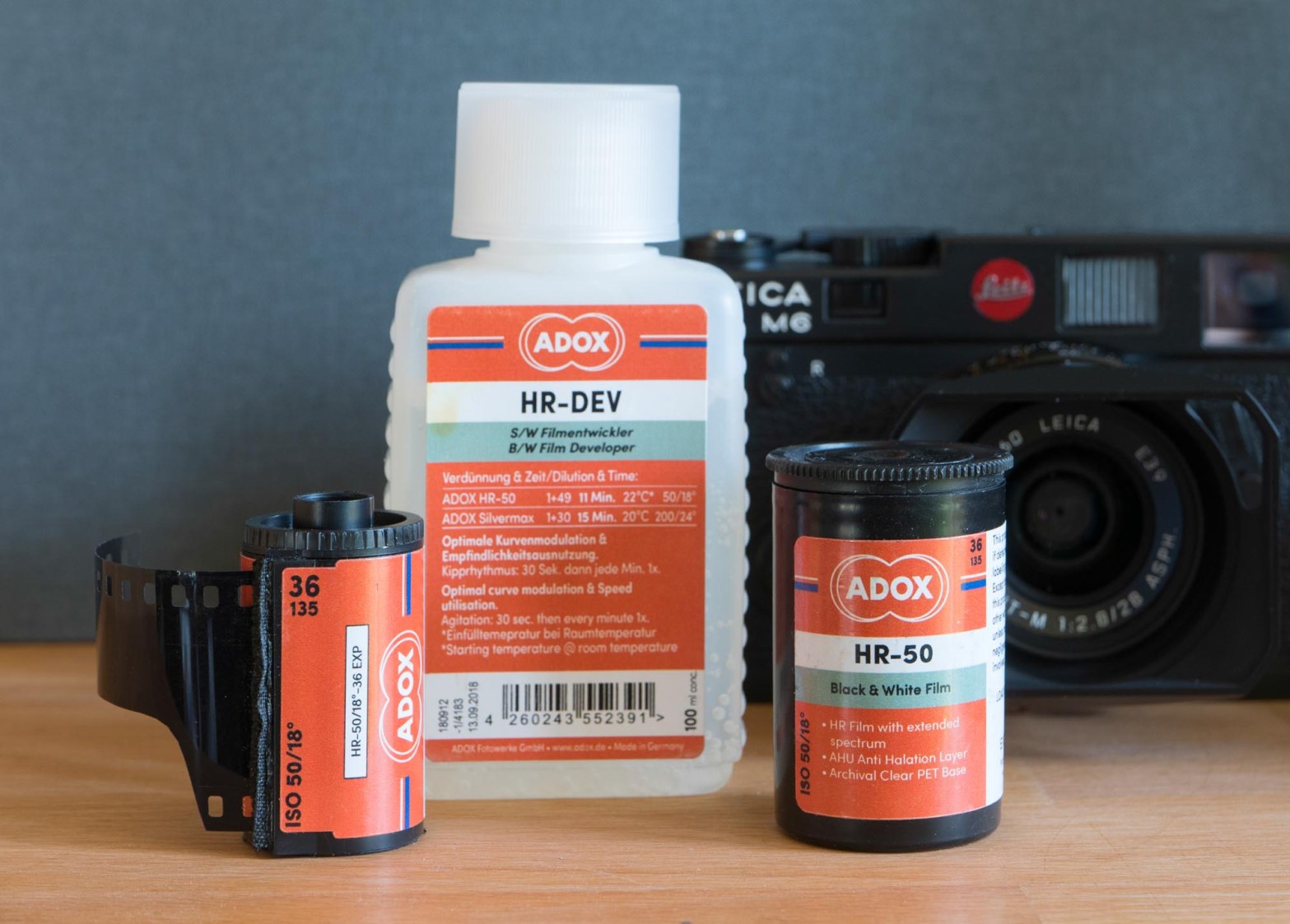Ever since starting to shoot film again after a longish foray into the digital world, I have been looking for a replacement for my beloved Kodak Technical Pan, which was discontinued at the turn of the millennium. For those who have missed this one: Technical Pan was a high-resolution film with practically no visible grain, maximum sharpness and high contrast. Exposed at ISO 50 and developed in Kodak Pota developer or in Tetenal Neofin Doku, it yielded beautiful, razor-sharp negatives with fine tonality.
At 2018’s Photokina I was pleasantly surprised to find that Adox had just introduced a film that seemed similarly promising in terms of tonal rendition, fine grain and sharpness. This film, ADOX HR-50, is being marketed as a previously available but now re-engineered and rebranded high-contrast film that comes with a special-formula hydroquinone developer to bring out the best possible rendition of grey tones. Adox calls its treatment of the film “Speed-Boost-Technology”, but this may be no more than a well-calculated dose of pre-exposure to flatten its inherently steep contrast curve and bring its gamma response in line with the demands of pictorial photography.

Neither Adox’s Mirko Bödecker nor any of the pundits I spoke to – citing NDAs – were willing to lift the veil of secrecy about which film actually lurks under the hood of HR-50. The only clue that I can give, after having worked with the film, is that it comes on an extraordinarily tough, crystal-clear polyester base. My usual routine of simply tearing off the cartridge from the film after having loaded the material into the tank spiral for development certainly didn’t work here. I had a very tough time prying it loose, wrecking the last two frames in the process.
After I had been warned by a proficient film-tester that I should expect to be disappointed if I was looking for a genuine Tech Pan replacement, I recently loaded my Leica M6 with a roll of HR-50, threw a Summicron-M 50 and an Elmarit-M 28 into the bag and took this combination down to a local industrial estate for a shoot. Afterwards, I developed the roll in ADOX HR-DEV according to the manufacturer’s suggestions.





All in all, I was quite pleased with the results. The film scanned well, I think, and yields a good range of mid-tones. It turned out to be ever so slightly more grainy than Tech Pan, not quite as soft either, and is therefore well in line with the currently more popular nitty-gritty analog look. However, I am certainly looking forward to Adox making good on their announcement to make this film available in 120 and LF formats as well. I expect HR-50 to be a very promising performer in this context.
~ Jens
Submit your 5 Frames… today
Get your own 5 Frames featured by submitting your article using this form or by sending an email via the contact link at the top of the page.
Share your knowledge, story or project
The transfer of knowledge across the film photography community is the heart of EMULSIVE. You can add your support by contributing your thoughts, work, experiences and ideas to inspire the hundreds of thousands of people who read these pages each month. Check out the submission guide here.
If you like what you’re reading you can also help this passion project by heading over to the EMULSIVE Patreon page and contributing as little as a dollar a month. There’s also print and apparel over at Society 6, currently showcasing over two dozen t-shirt designs and over a dozen unique photographs available for purchase.








3 responses to “5 Frames… With ADOX HR-50 (EI 50 / 35mm format / Leica M6)”
It’s Agfa Aviphot80. The Adox version is however pre-flashed and I’m guessing the Adox HR-50 developer is tuned to that curve.
Hello I read on the specs that Rodinal is not recommended. I have access only at Rodinal, is it really that bad? Do yuo have a time/temp starting point?
Maybe pre-flashed agfa copex. Which is probably a re-canned microfiche film or something. Copex comes in 120 size.